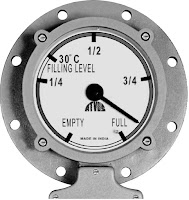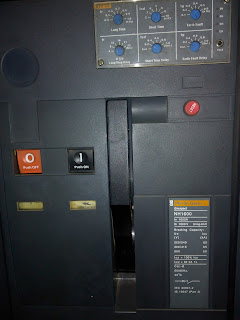"Harnessing Supercomputers and AI for Next-Gen Datacenter Efficiency"📡💻.
Supercomputers, combined with Artificial intelligence (AI), indeed have the potential to significantly enhance various aspects of weather forecasting, disaster modeling, radar systems, mineral exploration, water reserve monitoring, and other live models. Here's how they can be beneficial in these domains🌪️📡⛏️💧💻.
🌩️ Weather Forecasting and Catastrophe Modeling: Supercomputers can process vast amounts of meteorological data quickly, enabling high-resolution weather models that improve forecast accuracy.AI algorithms can analyze historical weather data, satellite imagery, and sensor data to predict weather patterns, extreme events (e.g., hurricanes, tornadoes), and their potential impacts. Real-time data assimilation and model updates can provide timely warnings and help plan disaster response. Here are some examples of how these technologies are being used to improve our understanding of the weather Hurricane tracking and intensity prediction, Flood prediction and management, Air quality monitoring, Aviation weather forecasting.
📡 Radar Systems: Supercomputers can process radar data in real-time to detect and track severe weather phenomena, such as thunderstorms, hail, and tornadoes.AI algorithms can enhance radar data analysis, improving the accuracy of weather radar predictions and reducing false alarms.
⛏️Mineral Exploration: Supercomputers can simulate geological processes and analyze geological data to identify potential mineral deposits.AI can assist in data interpretation, identifying patterns and anomalies in geological data that may indicate the presence of valuable minerals (Thorium🧪, Uranium ☢️, Radium☢️, Cesium-137☢️, Lithium🔋, Diamonds 💎).
💧Water Reserves Monitoring: Supercomputers can model groundwater flow, aquifer dynamics, and surface water interactions to assess water availability and quality.AI can analyze data from sensors and remote sensing platforms to monitor water levels, detect pollution, and predict changes in water resources.
🌍Scanners and Monitoring Systems: Supercomputers can process data from various scanning and monitoring systems, such as satellite imagery, LiDAR, and Sonar, for real-time monitoring and analysis.AI can automate the detection of anomalies or important features in the data, making it easier to identify critical information.
💡🌱Datacenter Energy Efficiency: AI-powered algorithms can analyze real-time data from sensors and monitoring devices within the datacenter to optimize cooling systems, ensuring that energy is used efficiently. Predictive analytics can anticipate periods of high demand and adjust server workloads and cooling systems accordingly to reduce energy consumption.
⚖️🔄Resource Allocation and Load Balancing: Supercomputing clusters can manage virtualization and resource allocation to optimize server performance, ensuring that workloads are evenly distributed.AI-driven load balancing can adapt to changing workloads and traffic patterns in real-time, minimizing latency and improving overall system performance.
🔒🚨Security and Threat Detection: AI-based cybersecurity systems can continuously monitor network traffic for unusual patterns or suspicious activities, quickly identifying potential threats. Supercomputing power can be used for complex threat modeling and simulations to better understand and defend against cyberattacks.
📊🔍Data Analytics and Insights:
Supercomputers can accelerate data analytics tasks, allowing datacenters to process and analyze vast datasets more quickly.
AI-driven analytics can uncover valuable insights from data, aiding decision-making in various industries, including finance, healthcare, and e-commerce
AI supercomputer ‘AIRAWAT’ Specifications:
Processor – AMD 2.25 GHZ.
Cores - 81,344 (CPU) + 10240 (GPU).
GPU – NVIDIA A100.
RAM – 1.5 PB. (1500 TB).
Storage – 4PB (4000 TB).
SPEED- 13.17 Peta Flops/sec (floating-point operations per second) [13 trillion Mathematical Calculations / Sec.].
Power Consumption – 1.2 MW.
In the datacenter field, the integration of supercomputing and AI technologies can lead to more efficient and reliable datacenter operations, reduced operating costs, and improved service quality. It also supports the growing demand for data processing and storage in various industries, including cloud computing, e-commerce, and content delivery.
.jpg)



Comments
Post a Comment